Vainamoinen – Sage, Sorcerer, Adventurer And Friend Of Ilmarinen In Kalevala Myths And Legends
A. Sutherland - AncientPages.com - The central figure of the Finnish epic 'Kalevala' is Vainamoinen (Väinämöinen), a god of songs and poetry. He is a great bard, sage, singer, and wizard, and according to tradition, he spent so long in his mother's womb that he was already an old man when he was born.
Vainamoinen playing kantele, by Johan Z. Blackstadius: 1851. Image via Wikipedia
Vainamoinen is sometimes said to be the source of the world's creation. Still, the most popular stories about him describe his great adventures, sorcery, his visit to the underworld, and coming back alive.
Usually, this god is described as an older man possessing a powerful, magical voice. Vainamoinen shares some properties with the Norse god Odin, regarding magic and poetry, but the Finnish hero can also sing and play the kantele. Therefore, he is often compared to Orpheus, a hero from Greek mythology, who, like Vainamoinen, fascinates the listener with his playing.
The hero of "Kalevala" is said to be the son of Ilmatar (a virgin spirit of the air), also occasionally called Luonnotar ('Nature's mother'). Ilmatar travels across the cosmic waters and meets a duck who puts her egg on her knees. The egg turns out to contain all celestial bodies.
Vainamoinen’s departure. Credit: Akseli Gallen-Kallela - Hämeenlinna Art Museum via wikipedia; Right: Robert Stigell: Väinämöinen, 1888. Image via wikipedia
Vainamoinen is presented as a sensitive old man with white hair and a beard. He helps to sow the fields with barley and grow trees. Vainamoinen is a handsome and charismatic man, but much of the Kalevala epic deals with his quest to find a wife. Unfortunately, he is unlucky in love. While looking for a wife among Pohja's women, he is promised one of Louhi's daughters, but first has to perform the magic talisman, Sampo. He cannot do it, so he entrusts the task to his companion, Illmarinen. Unfortunately for Vainamoinen, Louhi's daughter is much more attracted to Ilmarinen, the blacksmith, than to him.
Ilmarinen builds the Sampo in the North, which creates endless wealth for the northern people. Unfortunately, everything goes wrong, and soon, the people of Kaleva and Pohjola are fighting over the Sampo. Eventually, the magic mill is destroyed in the battle, and the pieces sink to the bottom of the sea.
Väinämöinen by Robert W. Ekman/Public Domain/Wikipedia
Vainamoinen joined by Lemminkainen and Ilmarinen, sets out to search for Sampo. After many adventures, they recover and carry the magical artifact onboard their vessel. Now Louhi knows that when the Sampo is lost, the prosperity of Northland is forever lost. So she calls the goddess of the densest fogs and sends her out to delay Wainamoinen's boat and order the sea monster, Ukko, to swim to the boat and sink it.
Only Vainamoinen's quick reaction saves his companions, but the wind takes away the Sampo in the storm. After the storm, Vainamoinen collected some parts of the artifacts scattered across the world and bound them together. He partially restores Sampo's former magical power.
When his mission ends, Vainamoinen constructs a boat of copper and sails off towards the west. People hear his singing:
'…Fare ye well, my people. Many suns shall rise and set on Kalevala until the people shall at length regret my absence and shall call upon me to come back with my magic songs and wisdom. Fare ye well….'
Vainamoinen finally leaves the mortal realm of Kalevala, never to return again. His endless journey begins, but in one of the epic passages, we learn that the Finnish national hero promises to return to his homeland whenever he is needed.
In the meantime, perhaps waiting for his return, we hear the sound of Vainamoinen's kantele and his wonderful, magical songs full of wisdom.
Updated on February 27, 2024
Written by – A. Sutherland AncientPages.com Senior Staff Writer
Copyright © AncientPages.com All rights reserved. This material may not be published, broadcast, rewritten or redistributed in whole or part without the express written permission of AncientPages.com
Expand for referencesReferences:
Elias Lönnrot, Kalevala
Frog, A-L Siikala, Stepanova E. Mythic Discourses: Studies in Uralic Traditions
More From Ancient Pages
-
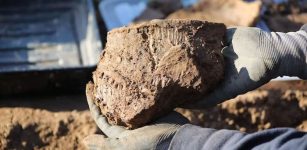 Incredible Prehistoric Discoveries Made By A Local Community That Helped Researchers
Featured Stories | Mar 23, 2023
Incredible Prehistoric Discoveries Made By A Local Community That Helped Researchers
Featured Stories | Mar 23, 2023 -
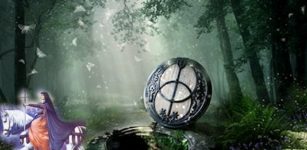 Glastonbury Tor – One Of The Most Mysterious Sacred Places In England
Civilizations | Aug 30, 2018
Glastonbury Tor – One Of The Most Mysterious Sacred Places In England
Civilizations | Aug 30, 2018 -
 Hogmanay: Scotland’s New Year Celebration Inherited From The Vikings
Ancient Traditions And Customs | Dec 31, 2024
Hogmanay: Scotland’s New Year Celebration Inherited From The Vikings
Ancient Traditions And Customs | Dec 31, 2024 -
 Chumash Indians Used Shell Beads As Money 2,000 Years Ago – New Study
Archaeology | Jan 30, 2021
Chumash Indians Used Shell Beads As Money 2,000 Years Ago – New Study
Archaeology | Jan 30, 2021 -
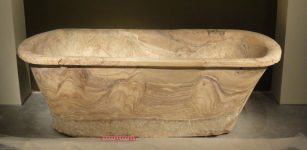 Where Were Herod The Great’s Royal Alabaster Bathtubs Quarried?
Archaeology | May 17, 2022
Where Were Herod The Great’s Royal Alabaster Bathtubs Quarried?
Archaeology | May 17, 2022 -
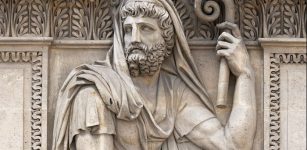 Numa Pompilius – Remarkable Legendary Second King Of Ancient Rome Who Succeeded Romulus – Did He Ever Exist?
Featured Stories | Mar 2, 2018
Numa Pompilius – Remarkable Legendary Second King Of Ancient Rome Who Succeeded Romulus – Did He Ever Exist?
Featured Stories | Mar 2, 2018 -
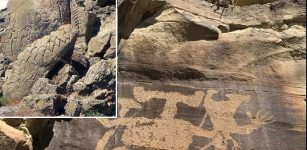 12,000-Year-Old Rock Art In North America – Dating Petroglyphs In The American West
Archaeology | Mar 4, 2022
12,000-Year-Old Rock Art In North America – Dating Petroglyphs In The American West
Archaeology | Mar 4, 2022 -
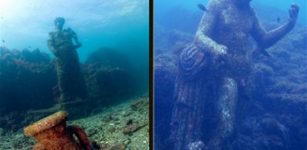 Time Capsule: Sunken Ancient City Of Baiae
Archaeology | Mar 27, 2014
Time Capsule: Sunken Ancient City Of Baiae
Archaeology | Mar 27, 2014 -
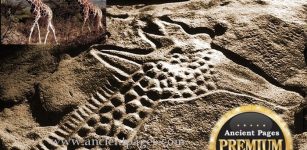 Gigantic Engravings Of A Giraffe Created Long Before Egypt As We Know It Existed
Ancient Mysteries | Jan 14, 2015
Gigantic Engravings Of A Giraffe Created Long Before Egypt As We Know It Existed
Ancient Mysteries | Jan 14, 2015 -
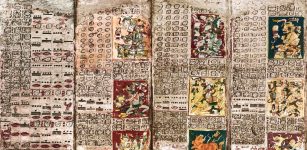 Dresden Codex – Probably The Oldest And Best Preserved Book Of The Maya
Ancient History Facts | Jun 24, 2016
Dresden Codex – Probably The Oldest And Best Preserved Book Of The Maya
Ancient History Facts | Jun 24, 2016 -
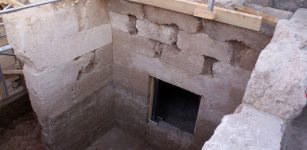 New Macedonian-Era Tomb With Four Chambers Was Discovered In Pella
Archaeology | Dec 23, 2015
New Macedonian-Era Tomb With Four Chambers Was Discovered In Pella
Archaeology | Dec 23, 2015 -
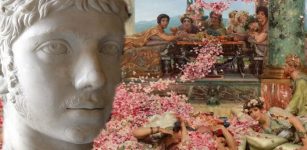 Museum Classifies Roman Emperor Elagabalus As Trans – But Modern Labels Oversimplify Ancient Gender Identities
Featured Stories | Nov 28, 2023
Museum Classifies Roman Emperor Elagabalus As Trans – But Modern Labels Oversimplify Ancient Gender Identities
Featured Stories | Nov 28, 2023 -
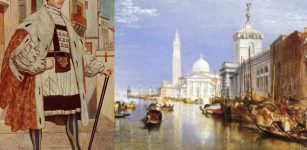 Ancient Venetian Merchants Were Always Prepared For The Worst
Featured Stories | Jul 12, 2024
Ancient Venetian Merchants Were Always Prepared For The Worst
Featured Stories | Jul 12, 2024 -
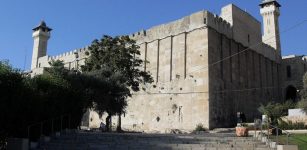 Tomb of Patriarchs In Hebron Was Used And Visited By Pilgrims 2,700 Years Ago – New Study
Archaeology | Jul 10, 2020
Tomb of Patriarchs In Hebron Was Used And Visited By Pilgrims 2,700 Years Ago – New Study
Archaeology | Jul 10, 2020 -
 Evidence Of An Unknown Neolithic Society At Oued Beht In North Africa Discovered
Archaeology | Sep 30, 2024
Evidence Of An Unknown Neolithic Society At Oued Beht In North Africa Discovered
Archaeology | Sep 30, 2024 -
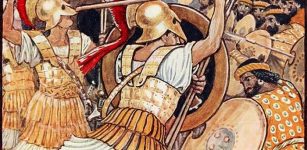 On This Day In History: Battle Of Marathon Was Fought – On Sep 12, 490 BC
News | Sep 12, 2016
On This Day In History: Battle Of Marathon Was Fought – On Sep 12, 490 BC
News | Sep 12, 2016 -
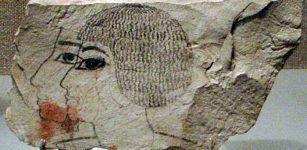 Tomb Of Senenmut And Earliest Known Star Map In Ancient Egypt
Civilizations | Nov 17, 2016
Tomb Of Senenmut And Earliest Known Star Map In Ancient Egypt
Civilizations | Nov 17, 2016 -
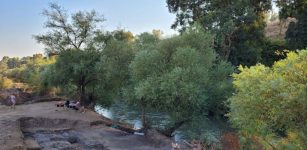 How Climate Change Contruibuted To The Transition From Nomadic Hunter-Gatherers To Settlement And Farming Societies
Archaeology | Nov 27, 2021
How Climate Change Contruibuted To The Transition From Nomadic Hunter-Gatherers To Settlement And Farming Societies
Archaeology | Nov 27, 2021 -
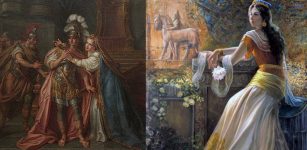 Rhodogune Of Parthia Refused To Bath And Comb Her Hair Until She Subdued The Rebels
Featured Stories | Oct 7, 2019
Rhodogune Of Parthia Refused To Bath And Comb Her Hair Until She Subdued The Rebels
Featured Stories | Oct 7, 2019 -
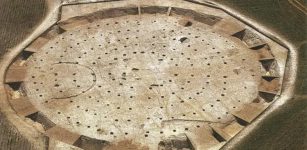 Why Was Dorset Ancient Mega Henge Built In Such A Hurry?
Archaeology | Nov 5, 2020
Why Was Dorset Ancient Mega Henge Built In Such A Hurry?
Archaeology | Nov 5, 2020



